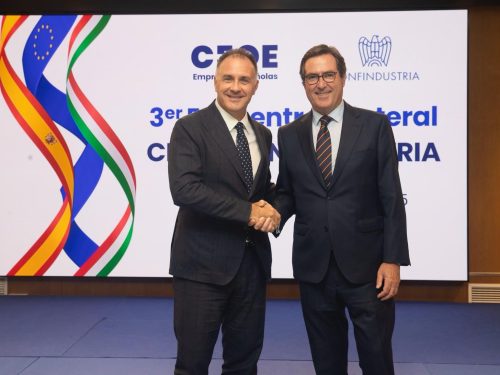News
Share on
Today the Confindustria delegate for theenergy, Aurelio Regina, intervened in hearing at the Senate of the Republic's Industry Committee on the Agriculture Decree.
Among the provisions contained in the measure under review is a provision that provides for restrictions on theagricultural land use for the installation of ground-mounted photovoltaic panels. The rule risks having effects that would go beyond its purpose, negatively impacting the renewable energy production necessary to meet the competitive decarbonisation goals of industrial companies. In particular, Article 5 limits the availability of suitable areas for the production of electricity from ground-mounted photovoltaic plants. While waiting for the definition of a ministerial decree that regulates the criteria for identifying suitable areas for the installation of photovoltaic systems - which we hope will be approved as soon as possible - I would like to focus our contribution on suggesting some improvements to combine the needs of strategic sectors for the country such as agriculture and industry.
First of all, it must be remembered that the cost of electricity paid by Italian companies remains the highest compared to the main EU countries and also compared to other major international competitors, such as the USA. This depends on the electricity generation mix, which in Italy is largely tied to thermoelectric generation from natural gas (54%) and not to nuclear and renewables or coal as is the case elsewhere. It is expected that the growth of renewables (currently at 36% of the mix) will lead to a reduction in the electricity market price.
In April 2024, the price gap between Italy (at €86.80/MWh) and the other European countries was very marked: + 39% compared to Germany (€62.36/MWh), + 207% compared to France (€28.23/MWh) and + 535% compared to Spain (€13.67/MWh).
Confindustria continues to support the definition of a "single European price"and with this in mind, we have also submitted a proposal of electricity market reform in Italy, with the aim of supporting the expansion of renewable sources and freeing the price of electricity from the costs of fossil fuels. The idea is to create a market in which renewable electricity can be traded between suppliers and users. In this way the price of electricity for the user would be based on the average cost of renewables and no longer on the marginal cost of gas, with the effect of helping to reduce energy costs and increase the independence and sustainability of Italian companies.
We cannot then overlook the fact that the new European guidelines envisage an ambitious increase in the targets for reducing climate-changing emissions and, consequently, the new draft of National Integrated Energy and Climate Plan (the PNIEC will be finalised by the summer) set important national targets of decarbonisation and penetration of renewablesby forecasting the realisation of 57 GW from solar photovoltaics in 2030 compared to 2021. Compared to this target we are still far away, we still have to realise 50 GW, which in abstract would require about 63,000 hectares if they were all placed on the ground.
Given that the total of sagricultural area in Italy is 16.5 million hectares (i.e., more than half of the country's total surface area of 30,207,300 ha), so even if all the new photovoltaic capacity needed by 2030 were to be installed on agricultural land, this would require a land area of about 0.4%-0.5% of the country's agricultural land. The impact would still be minimal.
In this context, therefore, we propose to amend the decree and to provide for a further exception alongside those already provided for in the rule, stipulating that the rule restricting the use of agricultural land for the installation of ground-mounted photovoltaic systems does not apply to projects aimed at the self-production of renewable energy, even remotely, by industrial companies or by third parties with whom they enter into forward procurement contracts.
Special attention should also be paid to to energy intensive sectors industry, which underpin the manufacturing system and which must achieve an emissions reduction target of 62% by 2030 compared to 2005 (ETS target). This is why we believe that the areas of the sites subject to reclamationincluding orphan sites, owned by public entities, should be offered in concession for the implementation of the so-called energy release measure. In fact, these are contaminated areas and, in most cases, with a historical industrial vocation where agricultural opportunities are limited during the period in which the remediation is carried out, which should therefore be allocated to the energy valorisation.
Finally, Article 6 of the DL is dedicated to the African swine fever (ASF). This epidemic, the first signs of which date back to early 2022, is expanding rapidly in regions where breeding and production are concentrated. Some important PDO production chains are affected, and the consequences of further expansion would have far-reaching effects. The measures introduced by the DL certainly seem useful, but they should be strengthened, giving the Commissioner extraordinary powers, along the lines of those that the same DL gave to the Commissioner in charge of dealing with the emergency related to the Blue Crab species. In other words, there is an urgent need to implement a strategy with powers and resources commensurate with the challenge.















